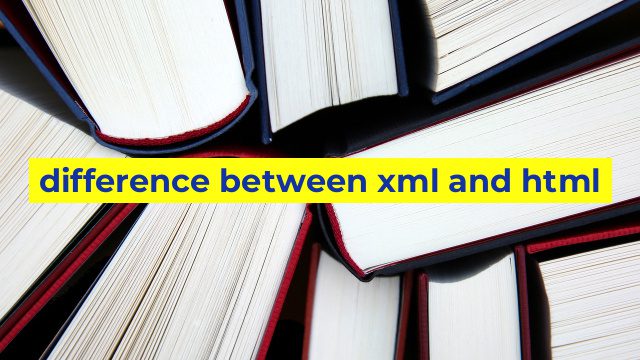The Difference Between XML and HTML
When it comes to web development, two of the most important programming languages are XML and HTML. Though they might seem similar on the surface, there are significant differences between the two that every web developer should be aware of.
What is HTML?
HTML, or HyperText Markup Language, is a programming language used for creating and structuring web pages. It is the foundation of the web, and every website that you see is built using HTML. HTML consists of a set of markup tags, which are used to define web page content.
The primary purpose of HTML is to present content in a format that is easily readable by web browsers. HTML tags are used to structure content, format text, and insert multimedia elements, such as images and videos, into web pages.
What is XML?
XML, or Extensible Markup Language, is a markup language used for storing and transporting data. Unlike HTML, which is primarily used for presenting content, XML is used to define data structures and document types.
XML is used in a variety of applications, including databases, web services, and electronic data interchange. It is designed to be human-readable and machine-readable, making it a versatile format for exchanging data between different systems.
The Differences Between HTML and XML
While HTML and XML share some similarities, there are significant differences in their usage and syntax. Here are some of the primary differences between HTML and XML:
1. Purpose: HTML is used for presenting content, while XML is used for defining data structures and document types.
2. Syntax: HTML is forgiving when it comes to syntax errors, while XML has strict rules for syntax and formatting.
3. Tags: HTML has a set of predefined tags for formatting content, while XML allows users to create their own tags depending on the specific data structure needed.
4. Validation: HTML does not require validation of its code, while XML requires validation before it can be used.
Conclusion
In summary, while HTML and XML share some similarities, they serve different purposes and have different syntax and validation requirements. While HTML is used for presenting content on the web, XML is used for defining data structures and document types, making it a valuable tool for data exchange between different systems. Understanding the differences between these two programming languages is essential for any web developer.
Table difference between xml and html
| Category | XML | HTML |
|---|---|---|
| Syntax | Strictly defined syntax with required tags and attributes | Loose syntax with optional tags and attributes |
| Purpose | Used for data exchange and storage, markup for documents and web pages | Used for creating web pages and web applications |
| Validation | Validation is important for ensuring data integrity and consistency | Validation is not as critical as XML |
| Data Types | Can represent complex data types such as dates, numbers, and custom types | Primarily used for text and media content |
| Structure | Structured with a hierarchy of nested elements | Structured with a document object model (DOM) |

